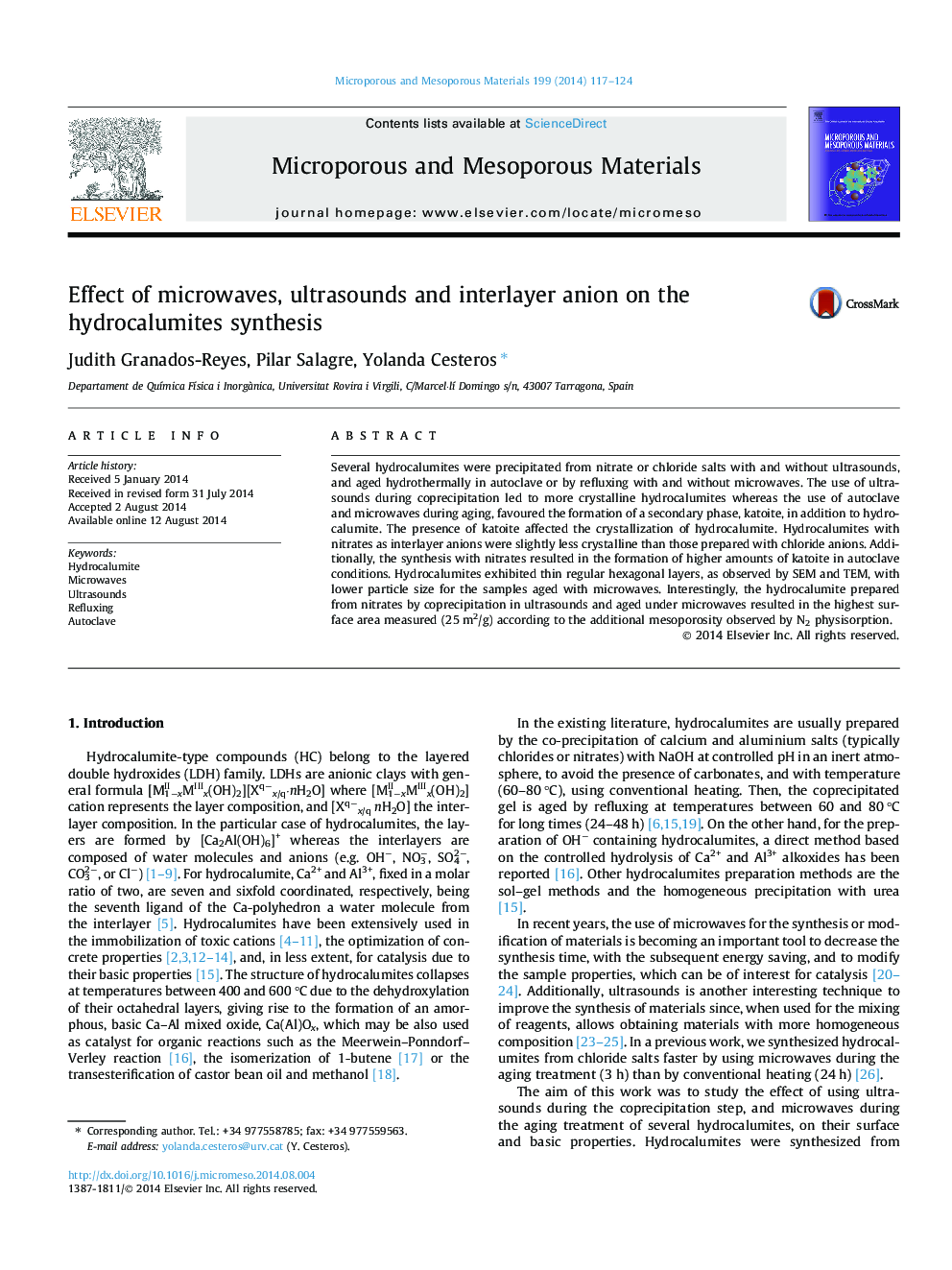| Article ID | Journal | Published Year | Pages | File Type |
|---|---|---|---|---|
| 72979 | Microporous and Mesoporous Materials | 2014 | 8 Pages |
•Microwaves refluxing allowed obtaining most crystalline hydrocalumites in less time.•Ultrasounds during coprecipitation resulted in more crystalline hydrocalumites.•Nitrate as interlayer anion led to less crystalline hydrocalumites than chloride.•Formation of katoite was favoured using microwaves, autoclave, and ions nitrate.•Use of ultrasounds, nitrate and microwaves refluxing led to the highest surface area.
Several hydrocalumites were precipitated from nitrate or chloride salts with and without ultrasounds, and aged hydrothermally in autoclave or by refluxing with and without microwaves. The use of ultrasounds during coprecipitation led to more crystalline hydrocalumites whereas the use of autoclave and microwaves during aging, favoured the formation of a secondary phase, katoite, in addition to hydrocalumite. The presence of katoite affected the crystallization of hydrocalumite. Hydrocalumites with nitrates as interlayer anions were slightly less crystalline than those prepared with chloride anions. Additionally, the synthesis with nitrates resulted in the formation of higher amounts of katoite in autoclave conditions. Hydrocalumites exhibited thin regular hexagonal layers, as observed by SEM and TEM, with lower particle size for the samples aged with microwaves. Interestingly, the hydrocalumite prepared from nitrates by coprecipitation in ultrasounds and aged under microwaves resulted in the highest surface area measured (25 m2/g) according to the additional mesoporosity observed by N2 physisorption.
Graphical abstractFigure optionsDownload full-size imageDownload as PowerPoint slide
